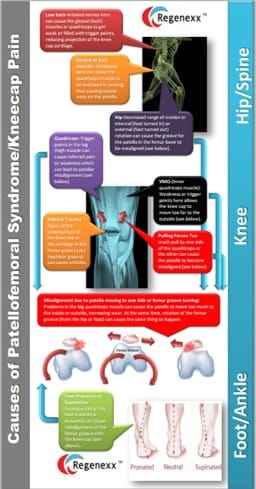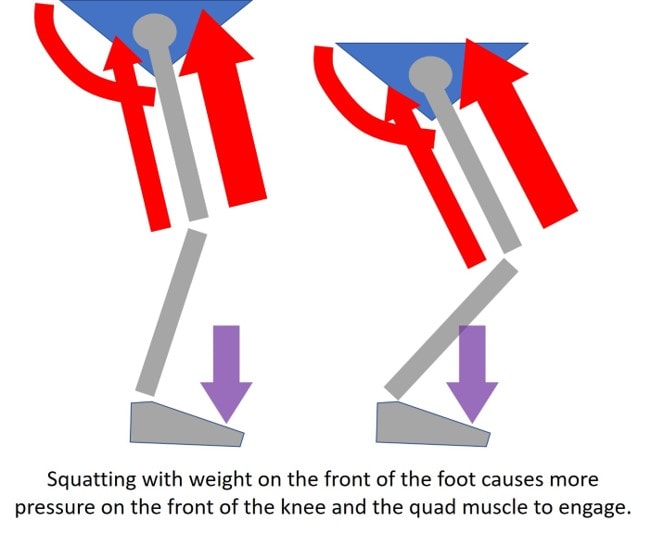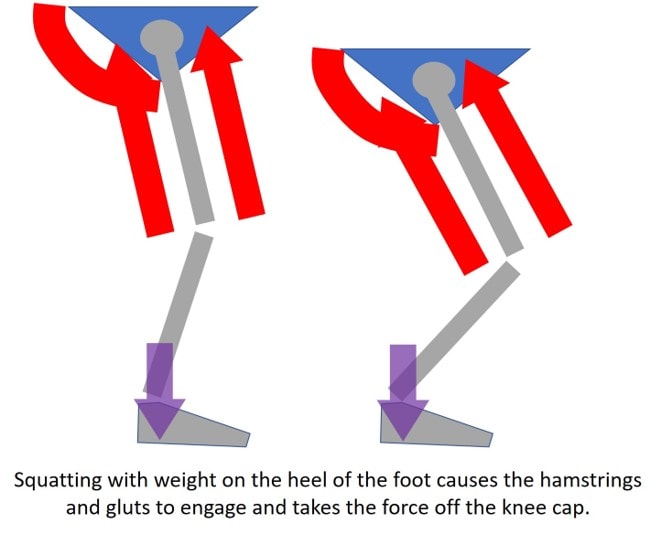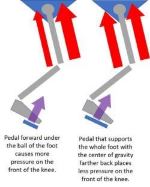Squatting to Help Knee Pain: Stop Frying Your Kneecap
I love seeing practical applications of biomechanics that can help patients. For example, yesterday afternoon I worked out at a hotel gym in Orlando. The spin bike had traditional clip-in pedals, which I haven’t used in more than a year. As I felt my weight shift to my quads and kneecap, I knew I had chanced on a great way to teach kneecap pain patients how to avoid frying their knee. Let me explain.
Kneecap Arthritis Is Really Common

A Simple Experiment to Learn How to Protect Your Knees


So in a few minutes, you’ve learned that how you activate the thigh and butt muscles can either hurt or help your kneecaps. Meaning, if you’re relying on your quads (quad dominant), this is going to cause problems. What’s the most common cause of a quad dominant knee that we see in the clinic? A bad back. Let me explain.
When the lower back nerves get irritated, this can shut down the hamstrings and the glutes. Since they’re less efficient, the quads take over. In about half of the patients I see with this issue, they know they have a back problem. Interestingly, in the other half, they don’t think they have a low back problem, but the irritated low back nerves are clearly seen on an exam.
Let’s See How This Applies to Spin Class and Bikes
So how did working out on a spin bike in a hotel gym get me on this topic? Last year I switched all of my bike pedals to this model. Why? A patient with patellar arthritis made the switch and swore by them. I then decided to check these out, and the biomechanics made sense, so I tried them on my spin bike. The rest is, as they say, history. However, I didn’t realize how good they were until this spin bike. Why? Let me explain.
Note the image to the right. 
When I got on the bike at the hotel, it put the pressure on the balls of my feet. This moved the force up through my quads and made me quad dominant. Which, over time, will burn out my kneecaps. It’s hard to explain just how different this felt than my new pedals at home. These place the force farther back on my foot and throughout my whole foot, which takes the pressure off of my quads and evenly distributes it between my quads and hamstrings.
The upshot? If you want to protect your kneecap cartilage, one thing you can do is to become less quad dominant. Meaning, move the weight back on your heels with squats or change out your bike pedals from the traditional style that place the force under the ball of your foot. Also, check out the infographic above to learn about other causes of kneecap problems. Finally, I have a whole blog dedicated to everything you can do to end patellar pain issues.

NOTE: This blog post provides general information to help the reader better understand regenerative medicine, musculoskeletal health, and related subjects. All content provided in this blog, website, or any linked materials, including text, graphics, images, patient profiles, outcomes, and information, are not intended and should not be considered or used as a substitute for medical advice, diagnosis, or treatment. Please always consult with a professional and certified healthcare provider to discuss if a treatment is right for you.
